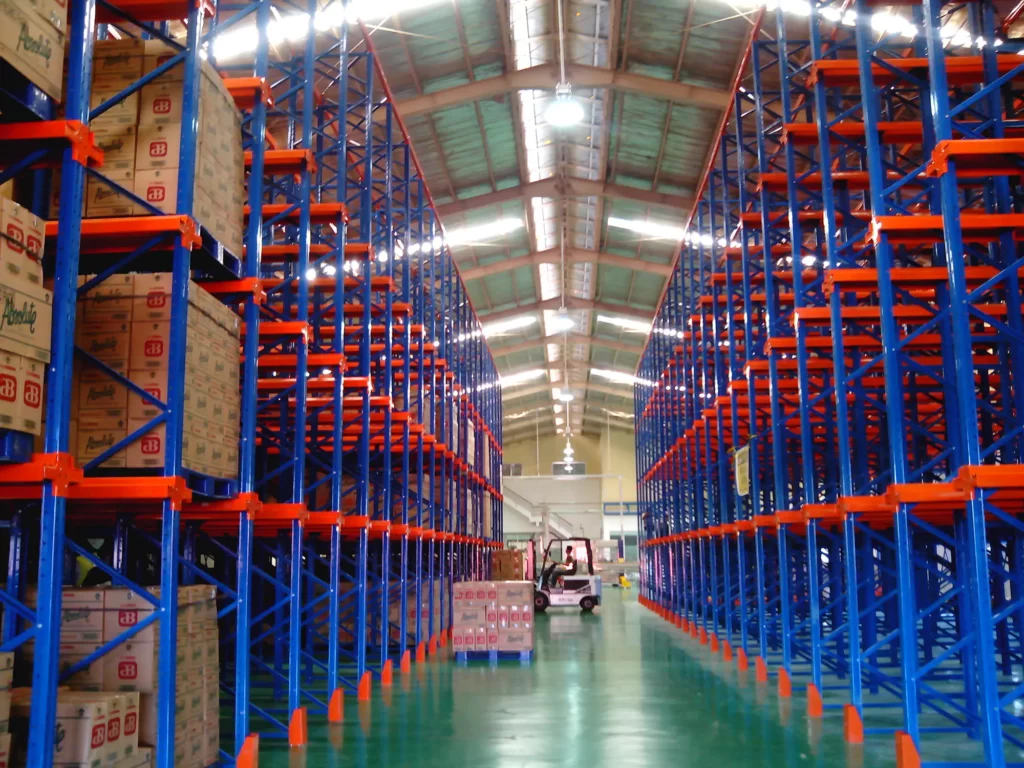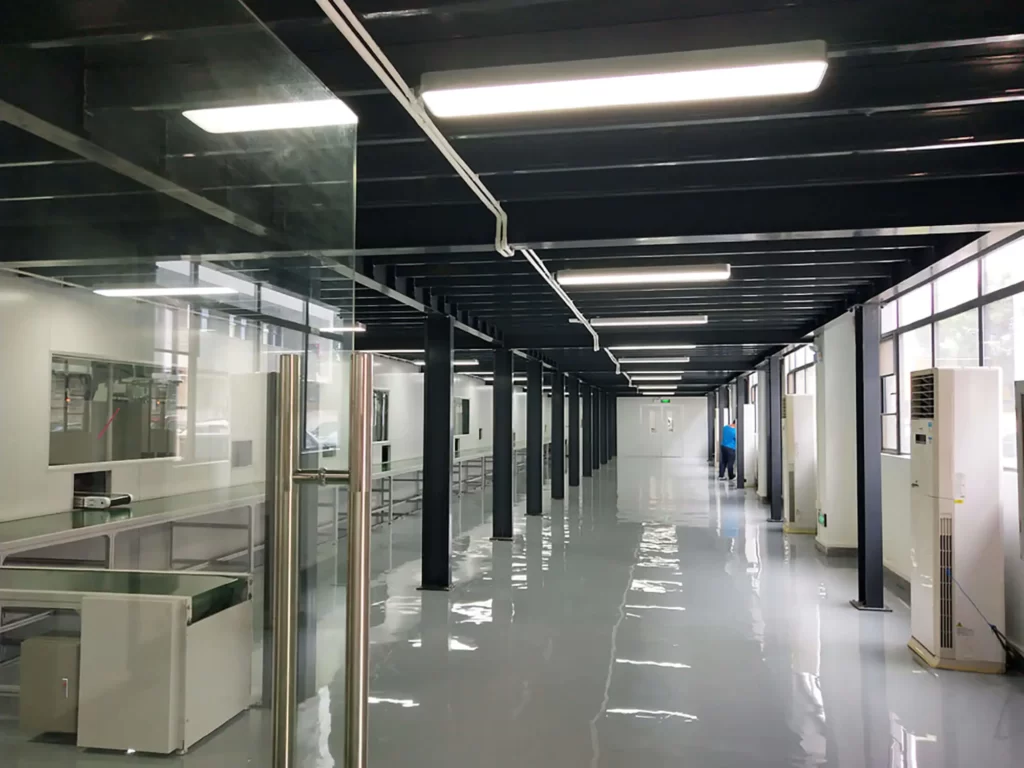In today’s transforming and competing industry, the efficiency of warehouses is of utmost importance. Customers may become dissatisfied due to layout designs, lagging processes, and old systems waiting for correction, which becomes an unnecessary delay.
The important question is: How do you resolve these problems to boost performance? In this article, we will discuss the warehouse challenges and specify which metrics are the most important to track. Then, we’ll discuss methods that could successfully increase warehouse operational efficiency.
Figure 1: Warehouse efficiency
1) What Really Causes Warehouse Efficiency
These inefficiencies in a warehouse negatively impact revenue, slow down order deliveries, erode customer loyalty and trust, and damage your overall brand, all simultaneously!. In this section, we will discuss challenges that cause ineffective performance in a warehouse.
i) Inefficient Warehouse Layout
To start, if there is no proper planning of your warehouse layout, the employees will have to use longer routes to locate or relocate products. Walking like this will hinder order preparation on time. Consequently, packing and shipping will take a longer time, too. This will also generate extra labor costs and delay customer delivery.
Figure 2: Inefficient Warehouse Layout
ii) Lack of Real-Time Inventory Visibility
Along with that, not having real-time updates leads to inflicting problems as well. Take, for instance, according to Koerber’s State of Shipping and Returns Survey, 70% of e-commerce businesses suffer from stockouts, overselling, and delays. Furthermore, 43% of retailers think better inventory visibility would improve the customer experience. Also, 24% of decision makers in retail are concerned about unclear inventory. Missed inventory leads to customers ordering out-of-stock items. This causes annoyance and sales loss.
iii) Out-of-date technology
Besides, working with previous systems or manually processing work activities increases the time taken to complete a task in a warehouse. Almost 40% of businesses still don’t use mobile scanners or barcode scanning systems, which have an 18–40% error rate. All of this can cause more errors, slow down the speed to fulfill orders, and increase the number of dissatisfied customers.
Figure 3: Outdated Technology in Warehouse
iv) Workforce Management Issues
Furthermore, issues related to staff management may negatively impact warehouse operations. Lack of proper training and not having enough workers all cause delays. These factors reduce productivity and increase the time needed to carry out daily activities. Order completion and customer satisfaction levels subsequently drop.
v) Seasonal or Demand Fluctuations
Lastly, customer demand can suddenly increase during holidays and sales. If you’re not prepared, this can overwhelm your warehouse and suppress your ability to meet inventory demand, resulting in stockouts and delays, which will in turn create unsatisfied customers.
On the other hand, Companies that utilize real-time inventory management systems are better equipped. Such businesses can reduce stockouts by 30% and overstocking by 20%.
2) Key Metrics to Track Warehouse Efficiency
In order to sustain the smooth operations in your warehouse, you need to evaluate the performance of various processes. Now we will discuss some of the metrics that are most critical for you to track:
- Order Accuracy Rate: This measures the efficiency of your business in picking, packing, and shipping orders. A higher efficiency is beneficial in improving customer service relations while reducing costs on returns.
- Inventory Turnover Ratio: Next, it shows how many times you are selling your inventory. A high ratio indicates you have a fast-moving stock, whereas a slow ratio indicates overstock or poor sales.
- Picking and Packing Speed: This measures how quickly your team picks items and prepares them for shipment. If this speed is low, consider reorganizing your layout or retraining your staff.
- On-Time delivery metrics: After that, it reveals the number of orders shipped out during the expected time or earlier than the given timeframe. A high rate strengthens trust among customers and assists in reducing complaints.
- Space Utilization: Also, this informs you of how well the available storage space is utilized. The more effective space utilization there is, the quicker the picking process is and the less additional space will be required.
- Labor Productivity (Orders per Hour): This looks at the average number of orders handled by a given employee in a single hour. Monitoring this is useful for identifying training shortfalls as well as gaps in workflows.
3) Methods to Boost Warehouse Efficiency
To improve the operational efficiency of your warehouse, it is vital to adopt appropriate techniques that improve workflows. Here we will discuss some tips that greatly improve the efficiency of your warehouse:
i) Optimize Warehouse Layout
Begin by reviewing your layout with inventory analysis ABC. This signifies that your items with the highest usage (A items) are closest to the packing stations. Afterwards, store the inventory logically so workers do not have to walk long distances. Clearly label all shelves so that all items can be located with ease. These modifications facilitate faster picking and reduce costs.
Figure 4: Optimize Warehouse Layout
For example, Amazon utilizes a disordered inventory system, putting products wherever there is free space, but their software knows where everything is located. This reduces the walking distance and increases picking efficiency.
ii) Implement a Warehouse Management System (WMS)
Afterward, employ WMS to automate the tracking of your inventories. It minimizes human error and provides an accurate stock level in real-time. This simplifies fast order processing and item restocking. Use the automated dashboards to monitor operations effortlessly and in real time.
Figure 5: Warehouse Management System
For example, Organizations utilizing a WMS experience a 25% increase in inventory accuracy and a 30% improvement in order processing times.
iii) Train and Empower Staff
Then, turn your attention toward training. An effective onboarding process ensures that new employees assimilate seamlessly into the organization. Ensure employees are trained to manage several duties because it enables continuity of workflow during peak periods. Motivate employees with incentives like bonuses or recognition to reward idle team spirit.
In addition, they improved picking accuracy and subsequently reduced onboarding time by 50%.
iv) Embrace Automation and Robotics
In addition, consider automating such activities as picking, packing, and sorting. This minimizes mistakes and saves time. You can incorporate AGV (automated guided vehicle), conveyors, and robot arms as well. Start with small-scale implementation, track your ROI, and then expand.
Figure 6: Embrace Automation and Robotics
For example, Ocado, a UK-based online supermarket, employs a robotic system that is able to pick up a grocery item in under 5 minutes. Warehouses that have implemented automation experience up to 70% faster order picking and a reduction in picking errors by 30%.
v) Improve Inventory Accuracy
Also, tracking of items should be done accurately through barcodes and RFID tags. Early mistake detection through regular cycle counts helps avoid full inventory shutdowns. Reduces overstock and stockout with real-time data. For instance, Walmart utilizes RFID technology for monitoring inventory on retail premises, as well as on warehouse facilities. This is beneficial in a way that out-of-stocks were decreased, and their sales and inventory accuracy improved to 99%.
Figure 7: Improve Inventory Accuracy
vi) Streamline Receiving and Shipping
After this, maintain an effective routing plan for dock scheduling in order to eliminate delays. In addition, issue mobile scanners to employees for faster incoming item scanning. Arrange stations so that all packaging and shipping processes can be done in a single motion.
For example, FedEx employs mobile scanning devices alongside dock scheduling as a means of expediting its package processing. This decreased the processing time by 30%, which further helped in meeting the deadlines for shipping.
Figure 8: Streamline Receiving and Shipping
vii) Enhance Communication and Collaboration
In addition, deploy technologies that enable staff instant communication, such as walkie-talkies or related applications. Provide your staff with performance reports, share successes, and inform them about their work. In addition, conduct daily problem-solving and feedback sessions. For example, Zappos utilizes internal communication systems to manage team coordination and order matters simultaneously.
Figure 9: Enhance Communication
viii) Analyze and Optimize Processes
Monitor your business processes in relation to metrics set for order precision and picking rate (KPIs). Identify where delays occur with time motion analysis, then implement lean warehousing strategies to reduce waste while increasing overall operational speed. A well-organized warehouse can assist in eliminating up to 40% of wasteful processes.
ix) Analyze and Optimize Processes
Make sure you are not overlooking safety. Provide adequate training programs so that employees are aware of how to minimize getting injured. In addition, purchase equipment that promotes optimal body positioning and minimizes fatigue. Routine safety inspections can minimize potential accidents before they occur. This reduces workplace injuries while enhancing employee productivity.
x) Go Green: Adopt Sustainable Practices
Lastly, save energy by using LED lighting and more efficient HVAC systems. Likewise, reduce waste and recycle packaging where possible. Opting for environment-friendly shipping alternatives improves brand perception. As an Example, IKEA puts solar panels on their warehouses and cuts down packaging waste.
Figure 10: Use LED lighting in a warehouse
Quora user Sudhir Phadke said that a Warehouse Management System (WMS) is a modern tool for managing inventory, not an accounting system. It needs full data on each product, like size, weight, and storage temperature. You must also feed in details about pallet space and storage areas.
He explained that WMS follows FIFO based on expiry dates. It tracks incoming items with a “Goods In” note, which helps verify quantities and record batch and expiry details. Items are then stored in coded locations. When issuing stock, a “Pick Ticket” is used. It shows what to pick and from where, based on FIFO. Any missing items are shown in the system. WMS also helps count stock and track fast or slow-moving products.
He added that WMS can connect to billing systems. This helps calculate storage fees and track payments. Overall, Sudhir said WMS is a must-have for modern warehouses.
Figure 11: Quora Review
Conclusion
In short, the first step in improving a warehouse’s efficiency is recognizing what is causing delays. Identifying areas of improvement can be achieved by tracking KPIs. Subsequent to this, costs can be reduced and processes sped up through smart approaches like better layout design, increased automation, and staff training. This will make operations run more smoothly. In the long run, this allows you to fulfill your customers’ needs and expand your business over time.








